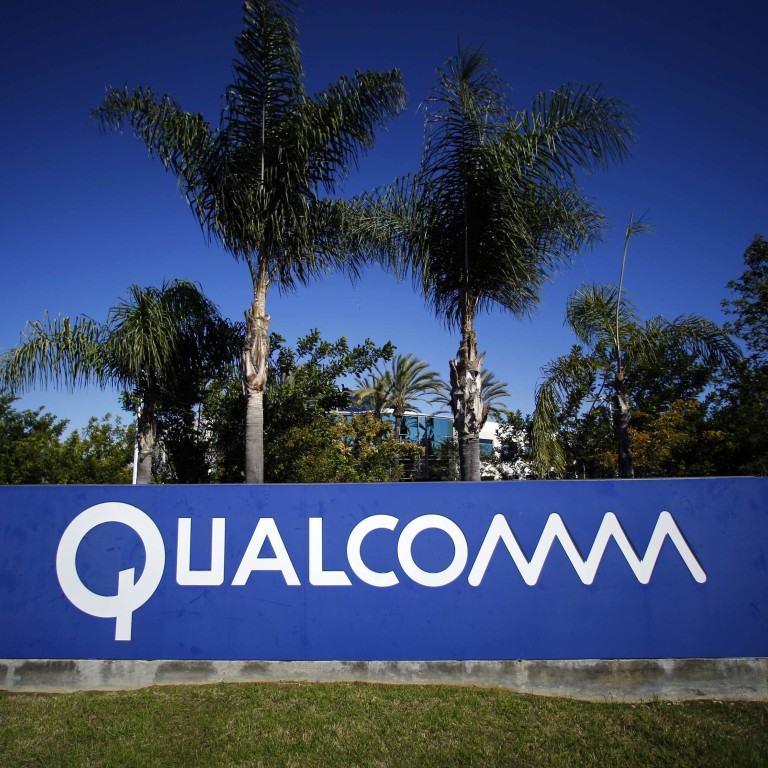
Update | Qualcomm to pay 6b yuan fine to China
Qualcomm, the world’s largest supplier of mobile chips, has agreed to pay 6.088 billion yuan fine to end a 14-month long government probe in China for anti-competitive practices.
The United States-based company said on Tuesday that it has reached a resolution with the National Development and Reform Commission (NDRC), a policy agency under the State Council which investigated the firm under China's Anti-Monopoly Law.
The fine was the largest imposed against a company on the mainland, but it was lower than recently reported estimates. The Securities Times had earlier speculated that the penalty could reach 10 billion yuan.
The NDRC has issued an Administrative Sanction Decision finding that Qualcomm has violated the anti-monopoly law.
Qualcomm said it will not pursue further legal proceedings contesting the NDRC’s findings as it agreed to implement a so-called rectification plan, which was designed to fully satisfy the requirements of the NDRC’s order.
Qualcomm has played an important role in the success of the mobile and semiconductor industries in China for many years, and we look forward to building upon this foundation as we grow our investments, engagement and business in China
Qualcomm president Derek Aberle admitted last month that the government investigation was disruptive to its business on the mainland, which saw the company agree to a settlement with one licensee.
Although the firm is disappointed with the results of the investigation, Qualcomm chief executive Steve Mollenkopf said in a statement that the resolution has removed the uncertainty surrounding its business on the mainland.
“Qualcomm has played an important role in the success of the mobile and semiconductor industries in China for many years, and we look forward to building upon this foundation as we grow our investments, engagement and business in China,” Mollenkopf said.
Under its rectification plan, Qualcomm will provide the following:
— It will offer licences to its current 3G and 4G essential Chinese patents separately from licences to its other patents and it will provide patent lists during the negotiation process. If Qualcomm seeks a cross licence from a Chinese licencee as part of such offer, it will negotiate with the licencee in good faith and provide fair consideration for such rights.
— For licences of its 3G and 4G essential Chinese patents for branded devices sold for use on the mainland, Qualcomm will charge royalties of 5 per cent for 3G devices, including multimode 3G and 4G devices, and 3.5 per cent for 4G devices, including devices based on the mainland 4G standard called time-division long-term evolution (TDE-LTE), in each case using a royalty base of 65 per cent of the net selling price of the device.
— Qualcomm will give its existing licencees an opportunity to elect to take the new terms for sales of branded devices for use in China as of January 1 this year.
— Qualcomm will not condition the sale of baseband chips on the customer signing a licence agreement with terms that the NDRC found to be unreasonable or on the customer not challenging unreasonable terms in its licence agreement. This setup, however, does not require Qualcomm to sell chips to any entity that is not a Qualcomm licencee, and does not apply to a chip customer that refuses to report its sales of licenced devices as required by its patent licence agreement.
The company said it plans to continue to expand its investments and collaborations, including with the mainland’s mobile network operators, smartphone makers and other device suppliers, and within the country’s semiconductor industry.
In July last year, Qualcomm created a China-specific investment fund of US$150 million to further the development of mobile and semiconductor technologies, including initial investments in five mainland companies.
The company has also expanded its longstanding business relationship with Semiconductor Manufacturing International Corporation (SMIC), the mainland’s largest and most advanced contract semiconductor manufacturer.
In December, SMIC announced that it produced Qualcomm’s Snapdragon 410 processor using advanced 28-nanometre wafer production process.
"The successful yield of 28nm process technology on high-performance, low-power Snapdragon mobile processors represents a major milestone for SMIC in increasing our competitiveness in the global foundry landscape,” SMIC chief executive Chiu Tzu-yin said in December.

